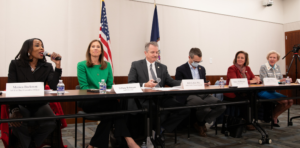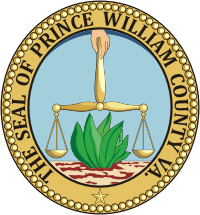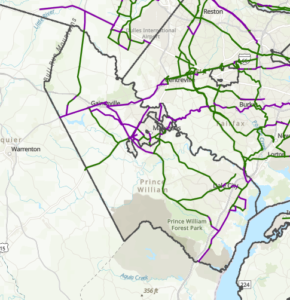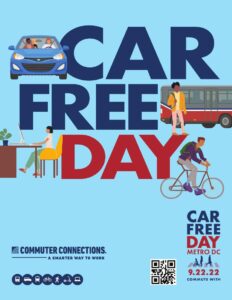
On December 2, 2024, Active Prince William’s co-chairs, Allen Muchnick and Mark Scheufler, separately delivered public statements at Northern Virginia’s joint annual transportation public meeting, before senior representatives of the six regional and state transportation agencies identified above
Our statements are posted below. As indicated in the announcement for this meeting, written comments related to any of the information presented at this meeting may be emailed or mailed through December 31, 2024.

Northern Virginia Joint Transportation Public Meeting
December 2, 2024
Statement of Allen Muchnick, Member
Virginia Bicycling Federation
and Active Prince William Boards of Directors
Good evening. I’m Allen Muchnick, a City of Manassas resident and a long-time board member of the advocacy groups Active Prince William and the Virginia Bicycling Federation.
For more than seven decades, our region has repeatedly expanded major roadways in a futile quest to fix traffic congestion. The result is a fiscally and environmentally unsustainable highway network, dysfunctional and ugly suburban sprawl, and inequitable and life-threatening mobility challenges, especially for households without multiple personal vehicles.
It’s time for Virginia’s transportation agencies to embrace the three guiding principles for transportation infrastructure investment articulated by the national advocacy group Transportation for America:
- Design for safety over speed
- Fix it first, and
- Invest in the rest
Designing for safety over speed is essential to reduce Virginia’s unacceptable epidemic of traffic violence. In 2023, Virginia traffic crashes killed 907 people, including 133 pedestrians, and injured nearly 64,000 people, including nearly 1700 pedestrians. It’s past time to aggressively retrofit all of Northern Virginia’s multilane commercial arterial roadways to establish more survivable design speeds, as part of a comprehensive Vision Zero strategy.
Fixing our mobility infrastructure requires much better maintenance of Virginia’s pedestrian and bicycle facilities. VDOT’s 2004 Policy for Integrating Bicycle and Pedestrian Accommodations states, in part:
- VDOT will maintain bicycle and pedestrian accommodations as necessary to keep the accommodations usable and accessible …..
- For sidewalks, shared use paths, and bicycle paths built within department right-of-way, built to department standards, and accepted for maintenance, VDOT will maintain these bicycle and pedestrian accommodations through replacement and repair.
However, VDOT still performs little maintenance and repair of its shared-use paths and sidewalks, except in response to reported complaints. After construction, the pavement is left to deteriorate for decades and is fixed only after repeated complaints. VDOT still has no annual budget or established policies and procedures to adequately and proactively assess and maintain its active mobility assets.
Thank you for this opportunity to comment. We urge VDOT to better support active mobility in the years ahead.
Statement of Mark Scheufler, Active Prince William Co-Chair
Thank you for the opportunity to speak tonight. I’m Mark Scheufler, Prince William County resident and 16-year VRE rider.
With the recent purchase of the Manassas Line and the planned completion of the Long Bridge in 2030, I strongly recommend VRE, region and state partner to support adding 2nd Platforms to the Manassas Park, Burke Centre, Rolling Road and Backlick Road stations to the near term Capital Improvement Plan. This will allow for the Manassas Line to move to an all-day, all-week clock face schedule, with a few commuter train slots during peak-of-peak time frames. The schedule along with 4-5 Amtrak trains per day will significantly increase ridership and lower capital costs due to the reduced train equipment needs that a high peak-of-peak commuter schedule requires.
More VRE service is vital for the region to take advantage of the VPRA multi-billion investment in the corridor and make better use of the VRE equipment that already carries high fixed costs regardless of the amount of service provided. I-95 and I-66 are not getting any more capacity for the next 50 years. VRE has the greatest ability to add significant mobility capacity in the region.
Boston/MBTA is an example of a rail system reworked their schedule to better serve people traveling in the middle of the day, in the evening and on weekends with the goal of transforming service from commuter rail to regional rail. Their rail ridership is near pre-pandemic levels while VRE is still near 40%.
Existing plans do not go far enough to handle service disruptions with a higher frequency schedule especially with Amtrak trains and freight trains mixed in. As a regular rider, service disruptions are a major hindrance when using the system.
I strongly recommend the 2nd platform project be submitted for future Northern Virginia Transportation Authority regional funding.
But most importantly transportation agencies need to work with the localities/state to integrate projects such as the 2nd platform project/all day service with land use changes to increase mixed-use/residential density adjacent to stations to draw more ridership. (This is especially needed in Fairfax County). This only works if all-day all-week service is planned. We have a major housing shortage in the region. Planning housing/services adjacent to high capacity transit service is a solution.
With the completion of the I-66 and I-95 Express Lane projects, competitive bus schedules during peak periods will limit future VRE growth in some segments of the catchment area. We need to start planning land use density improvements next to stations and 2nd platforms now to support high frequency service on the Manassas Line to begin when the Long Bridge opens.
Thank you for considering this testimony .





